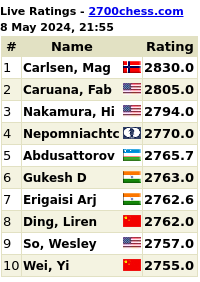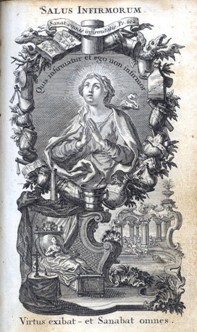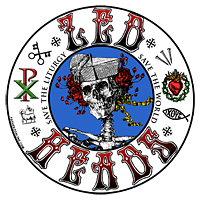 From a reader…
From a reader…
QUAERITUR:
I know a young couple. The man from indigenous descent who is converting to the faith and who will be baptized and confirmed this April.
She has asked about an amulet her husband never takes off except for x-rays and other medical reasons. The amulet signifies strength, leadership, and wisdom which are also congruent with the role of husband and father. He believes it to be a form of protection.
Her question, which I really couldn’t answer, is whether she should be worried about this and what to do about it. Can it be blessed? Should it be exorcised since prayers are said in the making of these amulets?
The worry is not primarily the pagan amulet, but in offending our Lord by breaking the 1st Commandment.
Belief that a pagan symbol can offer protection is the very definition of superstition.
Note the disproportion between cause and effect.
…
…
…
Hmmm… what about putting a pagan dirt bowl dedicated to a demon on an altar. Breaking the 1st Commandment?


































That dirt bowl should be tossed into the Pachamama Swimming Hole (known colloquially as the Tiber).
Although I’m not a priest, I consulted St. Thomas and wanted to share my findings. I think it would be interesting to tease out what, psychologically speaking, is going on. But first, St. Thomas:
“…the species of superstition are differentiated, first on the part of the mode, secondly on the part of the object. For the divine worship may be given either to whom it ought to be given, namely, to the true God, but “in an undue mode,” and this is the first species of superstition; or to whom it ought not to be given, namely, to any creature whatsoever, and this is another genus of superstition, divided into many species in respect of the various ends of divine worship. For the end of divine worship is in the first place to give reverence to God, and in this respect the first species of this genus is “idolatry,” which unduly gives divine honor to a creature. The second end of religion is that man may be taught by God Whom he worships; and to this must be referred “divinatory” superstition, which consults the demons through compacts made with them, whether tacit or explicit. Thirdly, the end of divine worship is a certain direction of human acts according to the precepts of God the object of that worship: and to this must be referred the superstition of certain “observances.”
Augustine alludes to these three (De Doctr. Christ. ii, 20), where he says that “anything invented by man for making and worshipping idols is superstitious,” and this refers to the first species. Then he goes on to say, “or any agreement or covenant made with the demons for the purpose of consultation and of compact by tokens,” which refers to the second species; and a little further on he adds: “To this kind belong all sorts of amulets and such like,” and this refers to the third species.” ST II-II 92,2,c
Trust in a pagan token qua pagan would be idolatry. (Arguably, placing an unequivocally pagan symbol of a pagan diety on a Christian altar right beside the Lord of All, would… Hmm…) Trust in any token, object, creature, etc, qua itself would also be idolatry.
Now, if it was a Catholic amulet, traditional or lawfully ingrafted, and it was trusted insofar as it was a token, this would apply to the third category St. Thomas enumerates. A sort of “it can’t fail because I’m wearing it,” rather then imparting grace from its source (ie. God) insofar as one is disposed to recieve the grace or the grace is freely imparted by God. If one were to take it as causally protective in itself, rather than as protective because it is consecrated to God, I would argue that this would be problematic.
I’m out of my depth as to whether or not something like this could be lawfully ingrafted as a devotional practice. It seems as though the object’s manufacture involved the second type of superstition St. Thomas enumerates, which is a problem…
It seems to me that this would be a perfect time to introduce the young man to the Brown Scapular, or like Catholic symbol, that can be worn as a profession of his soon-to-be-confirmed Faith.
There is good in that the man wishes to be strengthened and protected and does not see himself as the source and center of these things, but his desires need to be properly channeled and rooted in the One Who Truly Saves. Faith in Christ alone is truly what will bring that which this man seeks and will allow him to be the man that he should be. Indigenous symbols can be cutesie reminders of a forgotten past and a longing for tradition in this unrooted modernity (good things), but they can also be attachments and allegiances to powers that one is placing before God. The description given sounds like the latter and thus the amulate has to go.
But again, the baptism and confirmation is the perfect time for this — it can be a beautiful opportunity for the man to literally set down the signs and symbols of his pagan life and to emerge from the waters of baptism to take up the signs, symbols, and creeds of Faith in the Risen Lord Jesus who has conquered as no pagan myth has conquered and now reigns for all eternity.
Fr. Z recommended a book The Trouble with Magic: Our Failed Search for More and Christ’s Fulfillment of our Desires by Fr. Ermatinger a few months ago. This would be helpful to more fully dig into why such things should be set down.
https://a.co/d/fj5p5fm
2 Maccabees 12:38-46
I’d imagine the usual “burn it or bury it” still applies?